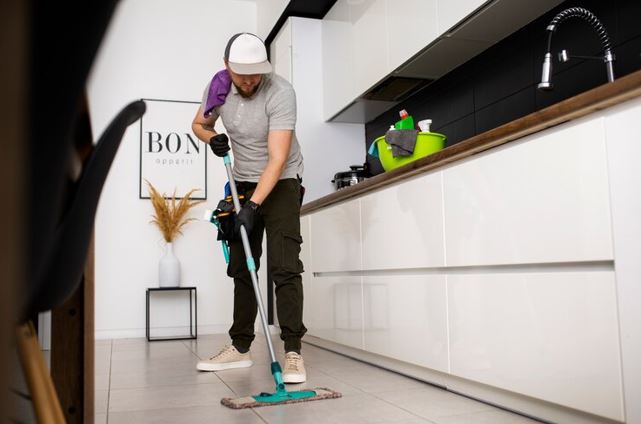Creating a home that feels open, airy, and inviting is often a matter of making thoughtful changes rather than undertaking massive renovations. Many homes, regardless of their size, can feel cramped when clutter, poor lighting, and ineffective layout choices dominate the space.
The key lies in focusing on smart adjustments that maximize visual openness and improve the flow of movement. By adopting a few carefully chosen strategies, any living area can feel significantly more expansive and comfortable without sacrificing warmth or character.
Embracing Minimalist Furniture Choices
Furniture often determines whether a room feels open or cramped. Bulky, ornate pieces may look impressive, but they take up more visual space than necessary.
Streamlined furniture with clean lines and exposed legs creates an illusion of openness by allowing light and air to move around freely. Multifunctional items, such as storage ottomans or foldable tables, reduce clutter by performing multiple roles while occupying minimal space.
Equally important is arranging furniture to maintain clear pathways. Positioning pieces against walls, leaving generous walking areas, and avoiding overcrowding allows the eye to travel across the room without interruption.
In living rooms, swapping large sectional sofas for compact loveseats or armchairs opens up floor space significantly, making the entire area feel broader and less congested.
Maximizing Natural Light for Openness
Natural light helps a room feel bigger and more open to the eyes. Bright, sunlit rooms naturally feel larger than dimly lit ones because light eliminates shadows that visually close off areas. Clean windows, sheer curtains, and reflective surfaces all enhance brightness. When natural light is abundant, rooms appear airy, and corners feel less confining.
For homes where window structures are outdated or failing to let in sufficient light, seeking the expertise of a local window replacement company can be a transformative step. Upgraded windows not only allow more daylight to pour in but also create a sense of continuity between indoor and outdoor areas, making interiors feel less boxed in.
Choosing larger panes, minimalistic frames, or sliding glass options helps achieve a sleek and spacious effect while modern designs improve energy efficiency, ensuring comfort year-round.
Using Mirrors to Expand Visual Depth
Mirrors are powerful tools for enhancing spaciousness because they reflect light and create an illusion of depth. Placing a large mirror opposite a window amplifies natural light, while mirrors on adjacent walls can make a narrow room appear twice as wide.
For best results, choose mirrors with sleek frames that blend seamlessly with the decor rather than drawing attention away from the reflected space.
Full-length mirrors in bedrooms or entryways create a similar effect, especially when placed where they can reflect doorways or hallways. Grouping smaller mirrors in a decorative arrangement can also make a wall feel less solid, giving the impression of an extended boundary.
Decluttering and Organizing with Purpose
Too many things in a room can make it feel tight and crowded, even if it is big. The first step toward a spacious home is a thorough decluttering session that prioritizes function over sentiment. Put away things you do not use often, give them to someone else, or throw them out.
Smart storage solutions further contribute to a clean, open look. Built-in shelving, under-bed storage, and wall-mounted racks keep items accessible yet out of sight, ensuring surfaces remain free. In living areas, baskets or decorative boxes help organize essentials without disrupting the aesthetic. The less the eye encounters random objects, the more expansive a room will appear.
Choosing a Strategic Color Palette
Color influences spatial perception as much as physical dimensions. Light, neutral shades such as soft whites, pale grays, or warm beiges visually expand walls by reflecting light. Using the same color on walls, ceilings, and trim reduces sharp contrasts that can visually “cut” a room into sections, creating a seamless and airy effect.
For those who prefer some contrast, accent walls in muted tones can add depth without overwhelming the space. Additionally, incorporating similar color tones in furniture and décor ensures a cohesive flow, helping the room feel connected and, therefore, more spacious.
Optimizing Floor Layout and Traffic Flow
The way furniture and décor are arranged affects how roomy a home feels. Rooms designed with clear pathways create a sense of openness, even if the actual square footage is modest.
Keep main walking paths clear by not placing big furniture or decorations in the way. Keeping the center of a room open and pushing heavier pieces toward the perimeter enhances visual width.
Open shelving instead of solid cabinets in kitchens or living areas can also lighten the visual load, provided that items are neatly arranged. Transparent or glass furniture pieces, such as coffee tables or side tables, further reduce visual bulk, giving the impression of more floor space.
Incorporating Vertical Design Elements
Height can be as influential as width when it comes to spaciousness. Drawing the eye upward creates a perception of taller walls and larger rooms. Floor-to-ceiling curtains, tall bookshelves, or vertical artwork can achieve this effect effortlessly.
Mounting shelves higher on the wall not only utilizes unused vertical space but also frees up lower areas, making rooms feel less crowded.
In smaller bedrooms or offices, lofted beds or elevated storage solutions create additional usable space below, effectively expanding functional areas without increasing the actual footprint.
Keeping Decor Simple and Cohesive
Overdecorating a room with too many patterns, colors, or accessories can instantly make it feel smaller. A cohesive style with minimal patterns allows the eye to rest and take in the entire space at once, creating a calm, open atmosphere. Large statement pieces, such as a single oversized painting or a bold rug, can provide visual interest without cluttering the area with multiple small decorative elements.
Using just a few plants can bring freshness to a space without making it look messy. Tall, slender varieties placed in corners enhance height perception, while low, wide arrangements work well on tables or shelves without encroaching on valuable surface space.
A home does not need to undergo expensive renovations to feel larger and more inviting. Strategic choices such as maximizing natural light, selecting streamlined furniture, and keeping decor minimal can dramatically change how spacious a room feels.
Even small changes—like adding mirrors, decluttering, and optimizing layout—work together to open up a home visually and physically. By making deliberate, thoughtful adjustments, any living space can feel significantly more expansive, creating an environment that is both comfortable and visually appealing.







